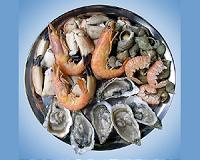| . |  |
. |
Madrid, Spain (SPX) Apr 28, 2011 Although the dune ecosystem is unusual, fragile and is protected by the "habitats" directive of the network Natura 2000, its conservation is very vulnerable to the proliferation of car parks, nearby buildings and inadequate boardwalks installed for protection or beach access. Researchers at the University of Seville (UoS) have published a study in the Journal of Coastal Research of human impact on the natural dunes at two sites in the Gulf of Cadiz, specifically in the protected areas of La Flecha Litoral in El Rompido and Enebrales in Punta Umbria, both in Huelva province. The experts show that both dune systems are exposed to human pressure. "This work tried to identify which factors influence the vulnerability of the dunes. On the one hand, these ecosystems are exposed to natural perturbations like storms, but also, we observe that human impact may have negative consequences even in zones which are difficult to access", explains Sara Munoz Valles, lead author of the study and researcher at the UoS, speaking to SINC. The scientists studied two dune systems, one at La Flecha Litoral in El Rompido, a "tongue of sand" almost entirely separated from the mainland, and which has very few tourists (only two kilometres can be accessed directly, the remaining ten kilometres can only be reached by boat), and at Enebrales in Punta Umbria, all of which can be accessed directly and which supports a considerable number of tourists. "We assessed the weakness of the dune system and we divided it into three zones. The first of these (mostly in the isolated part of La Flecha) showed a low vulnerability. However, the level of the other two zones was intermediate, a relatively high score considering that these are natural dunes", adds Munoz Valles. According to their assessment, some of the most affected areas, both in La Flecha and in Enebrales, owe this instability to human impact. "Specifically, car parks constructed within the dune area, poorly designed accesses and the laxity of control of tourists, as well as boardwalks installed at ground level which permit access to the beach over the first (seaward) line of dunes, but which interfere with their natural dynamics, have contributed to this vulnerability", indicates the researcher. This fact explains that zones of La Flecha where there are no boardwalks and tourists have free access to the dune system show the same degree of fragility and of poor conservation as zones in Enebrales, where there are six boardwalks intended to protect the dunes from trampling. "Based on these results, a programme of dune regeneration in the most affected zones has been put in place, some improvements have been made to the existing boardwalks, and better-designed accesses have also been built. But there is still a lot to do", the scientist points out. For Munoz Valles, certain characteristics of the dune system, such as the lie of the coast or the incidence of the sea, "cannot be modified with soft management techniques". Nevertheless, human impact can be avoided by giving better information to tourists and appropriate infrastructure.
Dunes and natural disasters "Aside from their beauty and biodiversity, the dynamics of dune formation are unusual and highly plastic, and they play a very important role in the protection of the interior. Studies of the passage of Hurricane Katrina have explained how well-conserved mangrove swamps mitigated the destruction and erosion caused by Katrina, while those in a poor state of conservation did not have that capacity. The case of dunes is similar as far as pounding by the sea is concerned", concludes the expert. References: Sara Munoz Valles, Juan B Gallego Fernandez, Claudia M. Dellafiore, 'Dune Vulnerability in Relation to Tourism Pressure in Central Gulf of Cadiz (SW Spain), a Case study', JOURNAL OF COASTAL RESEARCH 27 (2): 243-251, marzo de 2011.
Share This Article With Planet Earth
Related Links FECYT - Spanish Foundation for Science and Technology Water News - Science, Technology and Politics
 Japan mulls safety certificate for seafood: report
Japan mulls safety certificate for seafood: reportTokyo April 27, 2011 Japan is considering issuing safety certificates for its seafood exports, in a bid to ease foreign fears over radiation contamination, a report said Wednesday. Japan is working with its top trade partner China on the certificate in an effort to persuade Beijing to relax rules on Japanese seafood products, the Nikkei said. Some 35 countries and regions have imposed restrictions on Japanes ... read more |
|
| The content herein, unless otherwise known to be public domain, are Copyright 1995-2010 - SpaceDaily. AFP and UPI Wire Stories are copyright Agence France-Presse and United Press International. ESA Portal Reports are copyright European Space Agency. All NASA sourced material is public domain. Additional copyrights may apply in whole or part to other bona fide parties. Advertising does not imply endorsement,agreement or approval of any opinions, statements or information provided by SpaceDaily on any Web page published or hosted by SpaceDaily. Privacy Statement |